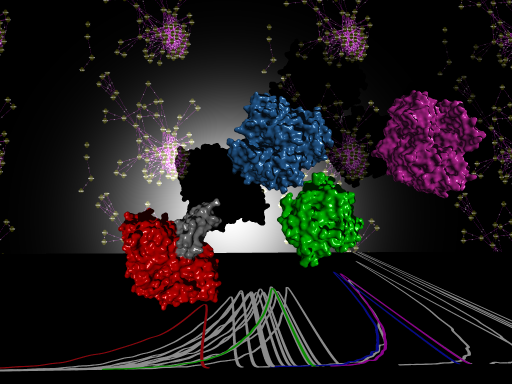Towards the prediction of protein interaction partners using physical docking

The prediction of protein interaction partners (which protein interacts with which one) and the prediction of the structure of a complex between two proteins known to interact have so far been regarded as two separated issues. Physical docking programs are intended for the second goal: predict the arrangement of two protein chains of known 3D structure when they interact. These programs produce a list of complexes (docking models), representing different poses/arrangements of the two protein chains, sorted by an score representing, in the simplest case, the geometric complementarity between the two chains in these arrangements. In general, these programs have a high degree of error and the native (real) complex is usually not among the top scoring ones in this list. Additional information and constraints are usually needed to filter these lists in order to locate the native complex. This relatively poor performance, together with the intrinsically high computational requirements of these programs, precluded their usage in the search for interaction partners to date.
We have shown that, in spite of this low accuracy of the basic docking methods, in a significant number of cases they can be used to locate interaction partners within large sets of alternative structures with diverse characteristics. The distribution of raw scores of the list of complexes is shifted to better scores for the docking experiment involving a real interaction partner, than for those involving likely non-interacting chains. Paradoxically, this happens even in cases where the docking experiment involving the truly interacting chain fails in locating the real complex.
A possible explanation for this observation could be related to the "energy-funnel" theory of protein interaction. According with this theory, not only the real complex between two interacting proteins has a favourable energy but there are many alternative complexes with favourable energies which help in "directing" the interaction to the real one. It is difficult to think that only the real complex has a favourable energy and that consequently the interaction process has to rely purely on random encounters until it is found, taking into account the millions of alternatives in which two proteins can face each other. Other conformations "around" the real one might also be favoured in a way that once the two chains find any of them, their way to the real complex is facilitated. That would explain the fact that, even if the real complex is not found by the docking program, these complexes are enough for shifting the energy distribution.
More information
© 2012, Computational Systems Biology Group. CNB-CSIC